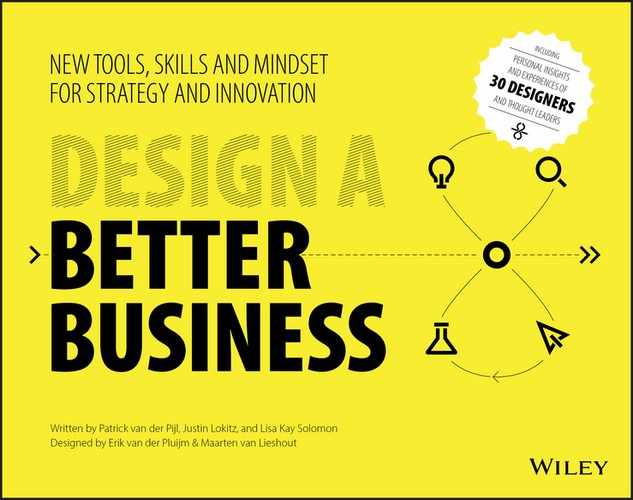Page 106
TOOL VALUE PROPOSITION CANVAS
When it comes time to really understand your customers, including their jobs-to-be-done, pains, and gains, as well as your offer to them, the Value Proposition Canvas, developed by Alex Osterwalder at Strategyzer, is one of the best tools available to help you.

FOCUS
understand your value proposition
![]()
± 45 MIN
pressure cooker
![]()
3–5
people per group
ALWAYS START WITH THE CUSTOMER
To get started with the Value Proposition Canvas, always start with the customer. Of course, you may have many different customer segments that you serve (or want to serve). So, as a team, your first task is to have a discussion about who the customers actually are from a high level, whereupon you can make some decisions about who you are designing for. You may need to fill out several canvases, one for each customer.
ASK ENOUGH “WHYS”
Once you’ve made the customer decision, as a team – using sticky notes and permanent markers – start to detail your customer’s jobs-to-be-done. What social, emotional, and functional jobs does your customer do on a daily basis? They have some functional job that you know probably about. But you’ll also need to uncover how they do that job, how they feel, and what social qualities come into play. For instance, a parent with the job of driving a child to school may also have functional jobs of getting them there on time, ensuring they’re fed throughout the day, making sure they’re not looking like an outcast (social standing may be important), providing the feeling of being loved and appreciated, etc. Ask enough “whys” and you’ll get this info. Pains are usually easiest to get. What gets in the way of a person’s jobs? It’s gains that elude most first-time users of the Value Proposition Canvas. Gains are NOT simply the opposite of pains. Instead, gains are the hidden ambitions people have, above and beyond pain relievers. It takes a designer’s mind to uncover these. This is where asking the right questions is really important. What does your customer really aspire to do that they cannot do now? Going back to the parent-driver example, perhaps it’s to look like a hero to their kids and other parents or to see their kids succeed in life. If gains sound somewhat existential to you, that’s probably because great gains often are.
YOUR JOB
Finally, once you’ve completed the right side of the canvas, move over to the left side. First, list some solution options that come to mind. You might have some already, or you might create some during an ideation session (detailed in the next chapter). With these in place, you’ll need to decide how these can be used together to address your customers’ jobs, pains, and gains in unique ways that resonate with your customers.
Using this canvas a few times will help you think differently about your customers and what you offer to them. What’s more, done well, your customers will think totally different about why they hired you to fulfill their needs in the first place. ![]()
Page 107
| DOWNLOAD Download the Value Proposition Canvas from www.designabetterbusiness.com |
CHECKLIST
![]() You mapped one customer persona per canvas.
You mapped one customer persona per canvas.
![]() You identified and prioritized at least 5 functional, social, and emotional jobs-to-be-done.
You identified and prioritized at least 5 functional, social, and emotional jobs-to-be-done.
![]() You identified and prioritized at least 5 pains.
You identified and prioritized at least 5 pains.
![]() You identified and prioritized at least 5 gains.
You identified and prioritized at least 5 gains.
![]() The gain creators and pain relievers directly address the gains and pains.
The gain creators and pain relievers directly address the gains and pains.
NEXT STEP
![]() Prototype and validate your assumptions.
Prototype and validate your assumptions.
![]() Check your assumptions with customers. Is it the real job-to-be-done?
Check your assumptions with customers. Is it the real job-to-be-done?

